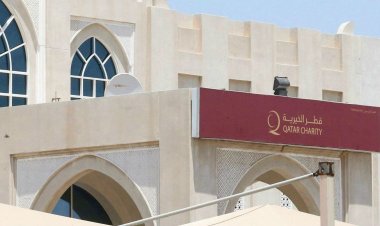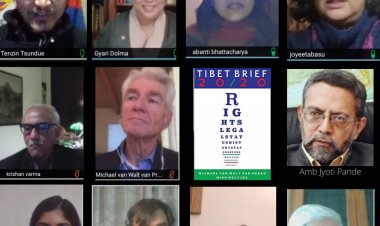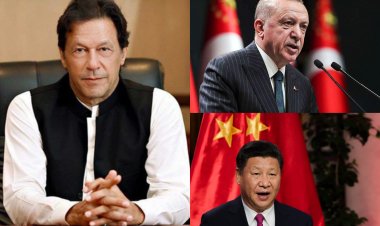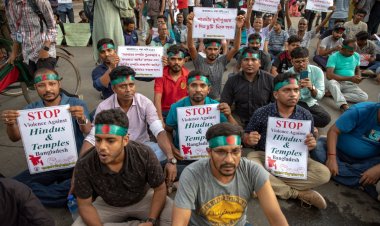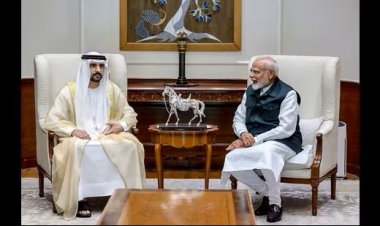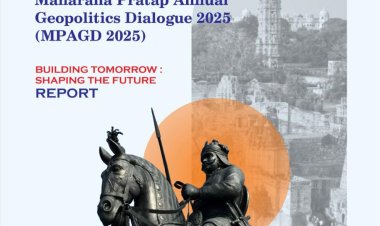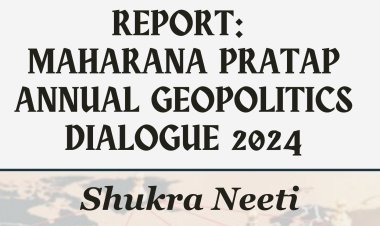Nepal’s New Chapter: Unique Coalitions and Challenges for Neighbours
The recent visit of Nepal's PM Pushpa Kamal Dahal 's (Prachanda) to India was aimed at deepning India -Nepal relations by facilitating talks which focused on cooperation in connectivity and energy under the broad ambit of increasing bilateral trade. This article analysed the Nepal politics and what are the key opportunities for India in the coming years.
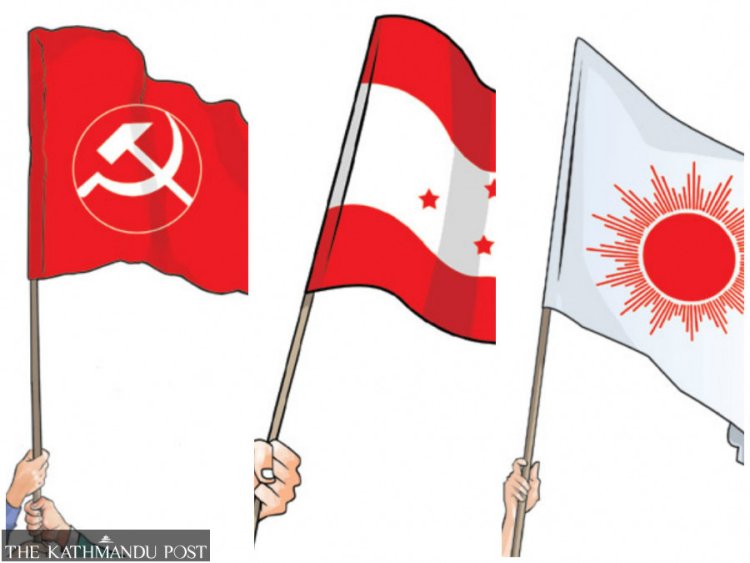
Analysis
By Pradyumn Rathod
What happened in Nepal?
On December 26, 2022, Pushpa Kamal Dahal “Prachanda” was sworn in as the 51st Prime Minister [PM] of Nepal after long political theatrics since the November 20th general election. Prachanda will be PM for the third time; as the first two times were in 2008-09 and 2016-17. A unique coalition formation was an unprecedented event for Nepal politics. Prachanda has formed an alliance with his long-time rival K.P Sharma Oli, on the promise of sharing the Prime Ministership for 2.5 years each. Prachanda and Oli agreed to run the government on a rotational basis and Prachanda will go first to take up the role of the PM. Prachanda’s Communist Party of Nepal (Maoist Centre) CPN[ MC] has formed a coalition with Oli’s Communist Party of Nepal (Unified Marxist-Leninist) CPN [UML]. The coalition also includes smaller parties, like Rashtriya Swatantra Party [RSP], Rashtriya Prajatantra Party [RPP],
This new combination is seen as a rather surprising development. Until 25th December, Prachanda was in a pre-poll alliance with the former PM Sher Bahadur Deuba with his National Congress [NC]. Deuba was set to become PM. But Prachanda walked out of the alliance last moment due to the rejection of his demand to become PM by Deuba. Also, Prachanda and Deuba had agreed to run the government on a rotational basis but they couldn’t come on the same page over the position of PM. The NC claimed to hold both the key posts of President and Prime Minister, which was rejected by Prachanda. Hence the talks failed between NC and CPN [MC]. Later on, Prachanda approached his rival Oli to seek his support for becoming Prime Minister. Also, other smaller parties joined the coalition. Oli was not going to be in power earlier but now, in the new development, Oli has got his choice of president and Speaker of the House of Representatives.
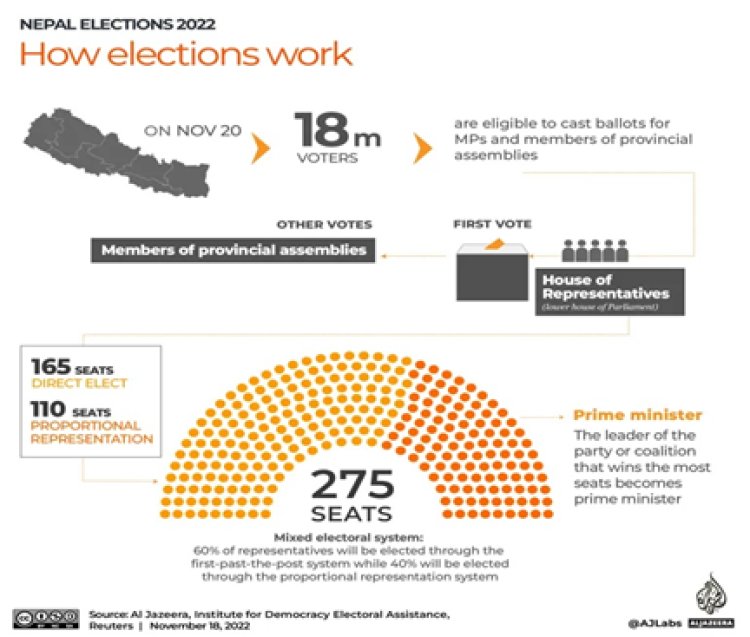
Hence in this new coalition, Prachanda’s CPN [MC] has won around 32 seats, with a total support of 169 members against the required majority of 138. The leader of the coalition or the party which has got a majority of the seats becomes the Prime Minister. In the current scenario, 78 seats are secured by CPN [UML], 20 by Rashtriya Swatantra Party, 14 by Rashtriya Prajatantra Party, 12 by Janata Samajbadi Party, 06 by Janamat Party and 04 by Nagarik Unmukti Party. Prachanda also secured the backing of independent members which includes Prabhu Sah, Kiran Kumar Sah and Amresh Kumar Singh. Whereas the Nepali Congress of Deuba has secured 89 seats [making it the single largest party] and plays the role of the main opposition.
Prachanda’s Background
Prachanda, 68, taking up the position of PM, was once a Nepali rebel leader who once headed the Maoist insurgency, which resulted in the departure of Nepal’s monarchy and the arrival of democracy in Nepal. The CPN [Maoist] started its insurgent movement to overthrow the monarchy. This insurgency saw killings of nearly 17000 people and an attack on several police stations. During Nepal’s Civil war from 1996-2006, Prachanda hid out for years in the jungle. In the 10 years of insurgency, Prachanda remained underground in India for 8 years. Due to his constant hiding out, Prachanda had very less political appeal among people. It was in 2006 when the long insurgency finally ended; Prachanda made a vital public appearance, met then PM Girija Prasad Koirala and became part of the creation of the country's new government and signed the Comprehensive Peace Agreement in November 2006.
Under his leadership in 2008, his party won 220 seats and he was elected PM. Before that, he didn’t have any parliamentary political experience, but in May 2009, Prachanda resigned. In 2016, Prachanda was again sworn in as PM, by the Constituent Assembly, after K.P Sharma Oli resigned ahead of the confidence vote, as Prachanda was only the official candidate, with the backing of the Madhesi front. Also, Prachanda’s party coalited with Deuba’s NC, they had a power-sharing deal and the terms of it made Prachanda step down in May 2017 and Deuba succeeded him.
What’s for India?
As the new government assumes its role in Nepal, one has to focus on India’s gain and role in it. India- Nepal ties have a strong foundation of religious, cultural, socioeconomic and political relations. The two neighbours share open borders, with the casual movement of people across the borders. This moment of people has built civilizational, cultural, marriages, kinship and familial bonds. The two countries, as rightly put forth by scholar Prof. SD Muni are the “ world’s closest neighbours”. The relationship of India with Nepal is formed on the principle of ‘’ and the policy of Neighbourhood First”. Post-independence, through the 1950 Treaty of Peace and Friendship, India and Nepal accorded a ‘special relationship’ status to each other.
In the current context, Prime Minister Narendra Modi was the first to congratulate Prachanda and express friendly ties with Nepal. During the tenure of K.P Sharma Oli, India experienced an “anti” attitude from Nepal. Oli is very much inclined to China. The issues of Kalapani, Lipulekh, Limpiyadhura and other territorial found resonance during the tenure of Oli. K.P Sharma Oli became the first PM on the “anti-India” wave. It is also said that this anti-India stance by Oli reflected political instability in the National politics of Nepal and also Oli’s weakness in the Public. But soon after Oli’s exit and Deuba taking the position, the relationship started to take off. Deuba’s visit to Lumbini [Uttar Pradesh], infrastructure and other collaborations made their way through the relations. Nepal offered India to take up the West Seti hydropower project, but this was opposed by Oli. According to the Former Indian envoy to Nepal, Ranjit Rae, India has to sync with whichever government comes to power in Nepal, because both countries have economic and security interests with each other. The new beginning in Nepal politics and the Prachanda-Oli coalition will lead to new challenges and confrontations for India, and if things go well, there may even be opportunities.
What’s for China?
With Oli coming back to power, Beijing seems to gain some points in Nepal. China-Nepal relations are age-old and deeply rooted. The relationship has always been friendly and cordial. In 1955, both countries established diplomatic relations and both sides lay their foundation of the relation on the Five Principles of Peaceful Co-existence. Also, their relationship is defined by the Sino-Nepalese Treaty of Peace and Friendship in 1960. China has always put Nepal on the important desk, on priority in its policies. During the tenure of Oli, both countries came closer. Oli was considered closer to China, and India experienced turbulence during Oli's leadership.
Prachanda took the oath on December 26th, which also happened to be Mao Zedong's 130th birthday. Mao Zedong’s ideology inspired Prachanda to lead the decade-long insurgency in Nepal. China sees the 2022 Nepal elections as a positive development, as the communist parties have been reunited and successfully reached power. China’s acting ambassador met Prachanda to congratulate him on the day of oath. He also conveyed that Beijing has lifted the suspension of business and supply of goods from the Rasuwa-Kerung and Hilsa-Parang 2 checkpoints that have been shut since the COVID-19 pandemic. Also, like Oli, Prachanda is pro-China. China soon wants to give a boost to its Belt and Road Initiative [BRI] projects. Even before the formation of the new government by parliament, Chinese experts were in Kathmandu to conduct a feasibility study for the Kerung-Kathmandu railway line. From the Chinese perspective, it is the “communist victory”. The first statement after polls came from the Chinese Foreign minister, “it was looking forward to working together with Nepal on BRI projects”. China claims that by doing this, it is "assisting Nepal in lessening its dependence on India" and "protecting its sovereignty.”
Also, on a different tangent, U.S. Ambassador Dean Thompson met Prachanda, to promise to deepen the 75-year-old relationship between Nepal-US. The presence of a U.S. element in Nepal politics has been there for the last few months. According to Nepali media, it is the American lobbyist who is promoting the Western style of democracy and opposition to communism. Overall, with the coming of a government dominated by the Communist Party, the influence of communism in Nepal will further groom and overshadow the U.S. and its influence.
Hence the new beginnings in Nepal politics have seen the dominance of left politics and a rise of Chinese influence. But this doesn’t guarantee political stability. It is going to be a low probability event, with a mixture of poles apart coalition that will question the Prachanda-Oli’s continuity, sharing of tenure of PM and completing the five years of governance. The first litmus test was on January 10, when Prachanda went for a floor test in the parliament. Prachanda passed the parliamentary floor test with flying colours, with all major parties voting in the favour of the new coalition. Prachanda received a total of 268 votes in the vote of confidence, in the 275-member House of Representatives. The massive victory of Prachanda in the parliament is considered as the highest vote a prime minister has ever received in the vote of confidence in parliament. Even the NC of Deuba voted in favour of the new government. Only two are against the new coalition. As the new government now finally has the stamp to govern Nepal, it started off with its Common Minimum Programme. This program includes the pledge to bring back the territories Limpiyadhura, Kalapani and Lipulek that are currently occupied by India. It’s time to see the new coalition, leadership, diplomacy, and political stability which will all be crucial for both the neighbours and the world. Which neighbour will gain more and which will lose more depends entirely on the new alliance.
Disclaimer: This paper is the author's individual scholastic contribution and does not necessarily reflect the organization's viewpoint.
Pradyumna Rathod is a Masters graduate in MA Diplomacy, Law and Business from OP Jindal Global University. He also hold a Masters and Bachelors in Political Science from Savitribai Phule Pune University. His keen interest broadly lies in Area studies, specifically concentrating towards South Asia, Europe and China.

